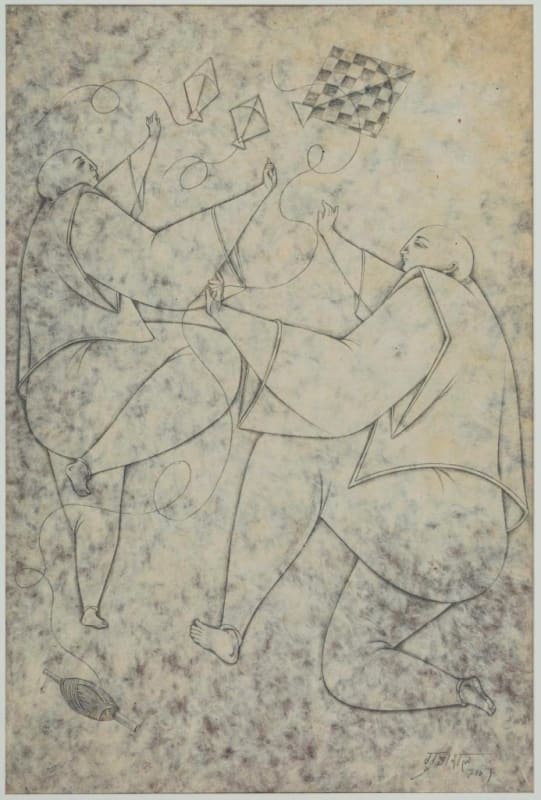A muralist, painter, sculptor and architect, Satish Gujral (b.1925) has indulged in all his areas of interest. Having been confined to his bed due to impaired hearing and damage to one of his legs in an accident, Gujral had led a mostly silent life. This, however, did not move his determination, and he carried on to challenge the restrictions of jumping in between art forms. The Partition of India was a turning point for him as an artist, and it reflected in his visual language while he witnessed atrocities. All these experiences turned into his subjects and aggressive brushwork, showcasing people's suffering. A distinguishable part of his work is his portraits, influenced by expressionism, which he had developed in Mexico. Gujral used steel, copper, wood, and later junk for his sculptures. Themes of violence, grief, and melancholy are a part of his practice.
Gujral joined the JJ School of Arts in Bombay, where he met the members of the Progressive Artists Group. Later, he went to Palacio de Bellas Artes in Mexico City, where he explored painting large fresco murals.
